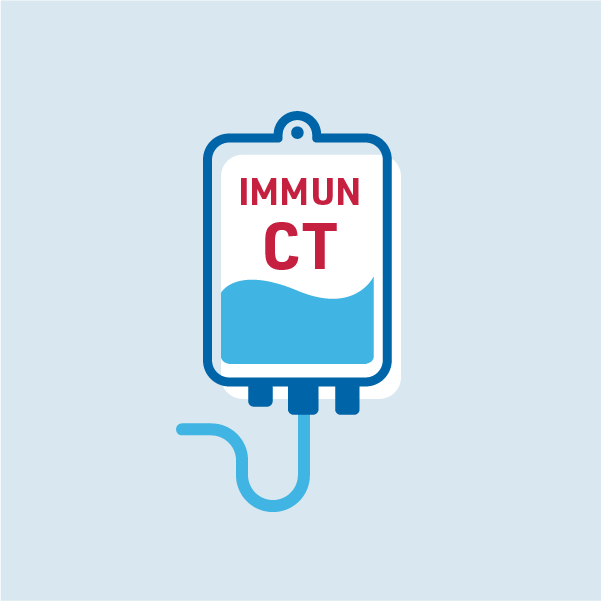

Chemotherapy is a common cancer treatment used to kill cancer cells. It works by attacking rapidly dividing cells, such as cancer cells. As it circulates throughout the body, it can also attack cancer cells that have already spread beyond the original tumour site. Treatment is usually administered in cycles as not all tumour cells can be eliminated with a single dose.1,2
How does chemotherapy work?
Chemotherapy contains cytotoxic drugs, which means it is toxic to cells. It is usually considered a systemic therapy because it travels throughout the body.2,3 Chemotherapy generally does not distinguish between healthy cells and cancer cells and as such, it attacks all rapidly dividing cells. These include hair follicle cells, for example, which is why common side effects like hair loss can occur.2,3
Chemotherapy is often combined with an antibody, such as rituximab, for patients with lymphoma. This combination is known as chemoimmunotherapy.4,5 The antibody specifically targets certain proteins on the surface of cancer cells, killing the lymphoma cells.4
Chemoimmunotherapy usually lasts between 16 and 24 weeks, depending on the type and prognosis of the lymphoma.6 The specific regimen of chemoimmunotherapy varies based on different factors and treatment may differ from that described here. Physicians will tailor the treatment plan to each patient’s individual needs.
Chemotherapy can be used to cure cancer, lessen the chance it will return or stop or slow its growth.1 For instance, in the case of diffuse large B-cell lymphoma (DLBCL), chemoimmunotherapy can achieve long-term disease control in approximately 90% of patients presenting with early-stage disease and up to 60% of those presenting with advanced stages.7
Chemotherapy not only affects tumour cells, it can also damage healthy tissue. This can lead to various side effects, which the treating doctor will discuss with you.2
Key side effects of chemotherapy include:2
Other side effects to be aware of include:2
Chemotherapy can cause a decrease in the number of white blood cells, red blood cells and platelets. A significant drop in white blood cells increases the risk of infection. Doctors can manage this with the prescription of certain medications or recommend a blood transfusion.8
For many patients, hair loss caused by chemotherapy, which can also occur with chemoimmunotherapy, is a concern of treatment. It is important to know that chemotherapy does not cause permanent damage to the hair roots and that hair grows back a few weeks after chemotherapy has been completed.9
Some types of chemotherapy can cause damage to the peripheral nerves, such as those that run to the hands and feet, causing numbness or tingling sensations. Patients who notice this side effect during treatment should speak to their doctor so that they can adjust the treatment plan accordingly.10
Chemotherapy can also affect the reproductive system, so if you want to have children in the future, you should discuss this with your doctor before starting treatment. They may recommend options like freezing your eggs or sperm banking before treatment begins.11
Certain anti-cancer drugs can also increase the risk of high blood pressure and heart diseases, especially for people over 65 years old and those who have received higher doses of certain drugs.11,12
Infusion reactions may occur, especially with the first dose. These reactions may include nausea, headaches, shortness of breath, fever and chills. As such, the first treatment is usually given as a slow infusion to help reduce the risk of these side effects.13–15
*This is an overview of side effects only. Please refer to the package insert for the relevant medicines for specific details.
References: